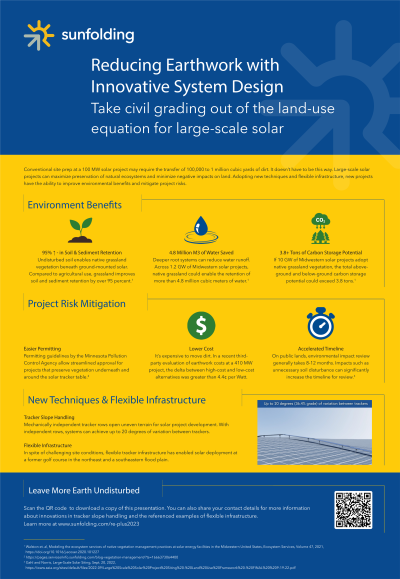Back

Managing Growth
Taking earthwork out of the land-use equation in utility-scale solar
Tuesday, September 12, 2023
4:30 PM - 5:30 PM PDT
Location: Poster Area, Booth #11024, Level 1, Venetian Expo Hall


Rahul Chandra
Head of Sales & Marketing
Sunfolding, Inc
Alameda, California, United States
Poster Presenter(s)
Following innovative system design practices, large-scale solar projects can maximize preservation of our natural ecosystems and minimize negative impacts on land. A large-scale solar siting framework produced by the Solar and Storage Industries Institute and published by SEIA highlights some of the environmental benefits that solar project development can achieve. In the Midwest, for example, solar projects that promoted pollinator-friendly plant growth showed a 95 percent increase in soil and sediment retention, a 19 percent increase in water retention, and a 65 percent increase in carbon storage potential. These environmental benefits ease the permitting process, reducing cost and accelerating the timeline for deployment. State and local permitting authorities use a variety of mitigation measures to limit erosion and stormwater runoff on projects that propose extensive cut-and-fill earthwork to flatten the land. Meanwhile, project developers and EPCs are uncovering new techniques and flexible infrastructure that reduce or eliminate the need to flatten earth in the first place. Less earthwork delivers downstream savings that extend to site prep, construction, and asset management. It's not uncommon for site prep at a 100 MW project to require the transfer of 100,000 to 1 million cubic yards of dirt. Within the fence line, these projects may also have to set aside land for retention ponds to control stormwater runoff. Projects that reduce earthwork improve site utilization, increasing project revenues and reducing operating costs associated with vegetation management.
